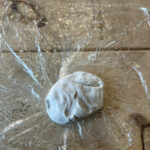“Dance” with clay – communicating with clay by using your body

Introduction
Have you tried the fun of creating with clay? Did you use your fingers or palms? Do you remember the tactile and emotional sensations when you come into contact with clay materials?
-We might as well think of this process as a ‘non-verbal’ physical communication between you and the clay material! It can also be seen as a way of expressing the ‘mind’ through the movements of the ‘body’.
The mind is like the wind and the body like the sand: if you want to know how the wind is blowing, you can look at the sand.
— Bonnie Bainbridge Cohen《Sensing, Feeling and Action》
Bonnie proposes an innovative way of exploring the body and mind, a technique for balancing the body and mind called BMC – Body-Mind Centering. As the quote in the excerpt suggests, BMC is an ongoing journey of exploring the body and mind. The explorer is our ‘mind’, including thoughts, perceptions, energy, and even the soul and spirit. As the exploration continues, we will gradually understand and experience how the ‘mind’ is expressed through the movements of the ‘body’.
I would like to invite you to try a new way of ‘playing’, which can also be understood as ‘dancing with clay’. In contemporary dance for two, the dancers use their bodies to create a dialogue. It’s a return to pure physical awareness. Our perception of the body changes from that of a bystander to that of a participant. Not only can we perceive the body’s senses, but we can even re-experience those that only remain as past ‘memories’. The natural flow of energy, ‘qi’, emotions, etc., during physical movement is what makes body-mind Centering so appealing.
This change of perspective also reminds me that the process of creating with clay is to be experienced ‘immersively’ in the body of the moment. The exploration of body and mind is universal, so that different groups can all connect and resonate.
How do we communicate our perceptions to each other? How do we get rid of language and feel the most essential communication between bodies? In this game, I hope everyone can try to feel the BMC and use pure physical coordination (with a partner, with the material) to perceive and communicate.
*This is a video of a contemporary dance performance for two people. You can try to understand ‘Communication through bodies’ from it.
Summary
1.1 Requirements of learners
*Just relax and join in. Don’t think of it as a ‘task’ that will be judged as good or bad. This is a proces that is worth experiencing.
1.2 Target population
*All those interested in clay materials and body perception
*Considering that some users may not be able to watch alone, I hope that some able-bodied people can take the initiative to share this activity with friends in need and help them participate. For example, ask someone to take the hand of a friend with hearing or visual impairments and guide them to feel the touch of the clay.
1.3 The aim of learning
*Complete clay creations through ‘physical collaboration’ with peers, using your bodies, coordinating and feeling the clay material at the same time.
*try to feel how the ‘mind’ is expressed through the movements of the ‘body’.
*Sharing experiences and insights after the creation is completed.
Instruction video
This is just an example. You can participate in some different ways (e.g. by choosing a different body part).
Preparation
2.1 Think about the questions
*How can we use our physical senses to communicate with clay (the material)? Or have we ever tried to use materials to connect with others, to express and communicate the self beyond words?
2.2 preparation of materials/tools
*Empty work surface, clay, water
Let’s start now
3.1 Read the introduction of the toolkit(1min)
3.2 Think about the questions.(15s)
3.3 Use the toolkit
(1) Divide into groups of two or three people(10s)
(2) play a simple interactive game to get a preliminary experience of how to use ‘body awareness’ to communicate with others(30s)
This game requires you to face your partner’s palm and move your body in line with the movement of your partner’s palm, while maintaining the same distance between you and the palm.
(3) Each group take one piece of clay(5s)
* Sept 1 Choose a part of each other’s body – for example, you might choose each other’s finger and the other may choose your elbow, and you will use these two parts to complete your creation together. (Be careful not to choose parts that are too uncomfortable to work with!)(1min)
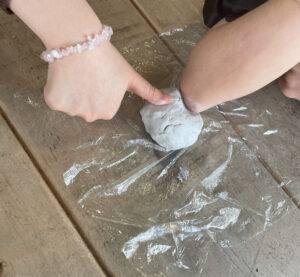
* Step 2 Coordinate your bodies, use the parts you have just chosen to touch and try to shape the piece of clay on the table. Please do not speak during this process, it is a collaboration between the senses and between the body and the material. Feel the state of the clay and adjust it at any time through the cooperation of your bodies. (5min)
Learners are also encouraged to try new things! For example, covering the learner’s eyes and letting them touch the clay and create; or deciding what to make, but only one person knowing what to make, with the other person working together to complete the work with the silent guidance of the informed partner.
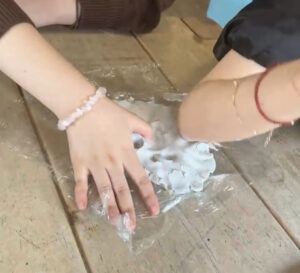
* Step 3 During the moulding process you should always be aware of the condition of the clay. It will dry out and crack from repeated kneading, which will affect the shape. This requires you to work together to find a time to moisten it with water. This process cannot be communicated verbally either. If one of you feels the need to add water, just take action. How to keep the clay in a relatively stable and easy to shape state while working together also requires your bodies (touch) to help with thinking. (5min)
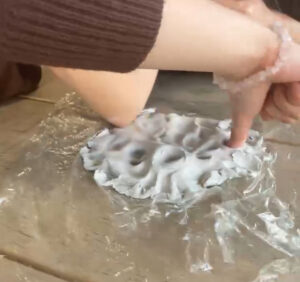
tip:It is also a good idea to videotape the moulding process, as you cannot see the whole view at the moment of creation. This will help you to review it later. When you review it, do you see new perspectives that give rise to new feelings? These are worth recording.
(3) Share, exhibit, and communicate(3min)
You can share your feelings directly with your partner, or you can use the link on this Miro board to share with more people! (You can add as many members and groups as you like, and share photos, videos or ideas.)
Link: https://miro.com/app/board/uXjVLDCjwFk=/?share_link_id=370886868661
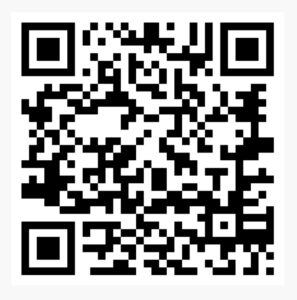
reflective questions
Thank you for playing!
Here are some questions that may help you understand the game or give you some new inspirations.
- Did this game inspire you in any way – in terms of how you perceive material, how you use your body?
- Do you need to prepare a lot to participate in the game? Do you need to have some prior knowledge (e.g. about ceramics, about dance), or can you just relax and participate (ruling out rational thinking/knowledge and relying more on the senses)?
- When you share your experiences with your partner, do you think there is any overlap in how you and your partner feel about this ‘ communication’? Or are there differences? When you share with more people, what are the new differences and similarities?
- Did the game offer you new perspectives on how to use materials, communicate and feel? (For example, you don’t have to finish a piece of clay work; you can just feel its texture and condition).
How do you want to use these new perspectives? If you were to describe the experience to someone who didn’t know about the game, what would you say?
“Dance” with clay – communicating with clay by using your body © 2024 by Ruoyun Lyu is licensed under CC BY-SA 4.0


